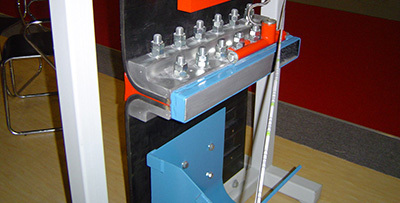News Center
Hezi technology focuses on the research and development of "rapid seamless conveyor belt joint sleeve" innovative technology project

NEWS CENTER

News Details
The Necessity of Durable Conveyor Rubber Belt Joints in Modern Industry
Release time:
2025-05-26
Conveyor systems are integral to the smooth operation of many industries, including manufacturing, mining, and logistics. At the heart of these systems are conveyor rubber belts, designed to transport materials efficiently. The durability of these belts is often tested by the harsh environments they operate in and the weight of the materials they carry. Thus, understanding the construction and functionality of conveyor rubber belts is essential.
Conveyor systems are integral to the smooth operation of many industries, including manufacturing, mining, and logistics. At the heart of these systems are conveyor rubber belts, designed to transport materials efficiently. The durability of these belts is often tested by the harsh environments they operate in and the weight of the materials they carry. Thus, understanding the construction and functionality of conveyor rubber belts is essential.
Conveyor rubber belts are primarily composed of rubber, which is then reinforced with fabric (like polyester or nylon) or steel. This combination offers flexibility, strength, and resilience against wear. These belts are engineered to handle a range of materials, from delicate items to heavy aggregates.
Joints are crucial components of conveyor belts. They not only connect belt ends but also play a significant role in the overall strength and durability of the conveyor system. The quality of joints can directly impact the performance and longevity of the belt.
Durable joints improve the reliability of conveyor systems. A strong joint minimizes the risk of belt failure, which can lead to unplanned downtime and disruption in operations. Reliable joints ensure that materials are transported smoothly and consistently.
Investing in high-quality conveyor rubber belt joints can lead to substantial cost savings over time. When joints are designed to withstand the rigors of industrial use, they reduce the frequency of replacements and maintenance. This results in lower operational costs and improved efficiency.
Weak or improperly constructed joints can pose safety hazards. A conveyor belt failure can lead to injuries, equipment damage, and loss of materials. Durable joints help mitigate these risks, ensuring a safer working environment.
Modern industries often expose conveyor systems to extreme conditions, such as high temperatures, humidity, and heavy loads. Durable joints are engineered to withstand these challenges, maintaining performance without compromising safety or efficiency.
Vulcanization is a chemical process that provides a seamless joint by bonding the belt ends together. This method results in a stronger joint that mimics the original belt’s properties, making it ideal for high-load applications.
Cold bonded joints use adhesives to bond belt ends, requiring less equipment and energy. While not as durable as vulcanized joints, they can be effective for less demanding applications.
In conclusion, the importance of durable conveyor rubber belt joints in modern industry cannot be overstated. They enhance reliability, improve safety, and offer cost-effective solutions for material handling challenges. Investing in high-quality joints tailored to specific operational needs is essential for achieving optimal performance and longevity in conveyor systems. Regular maintenance and the adoption of best practices can further enhance the effectiveness of these critical components. As technology continues to advance, staying informed about the latest developments will ensure that your conveyor systems remain competitive and efficient in an ever-evolving market.
Previous Page

Recommend News





























